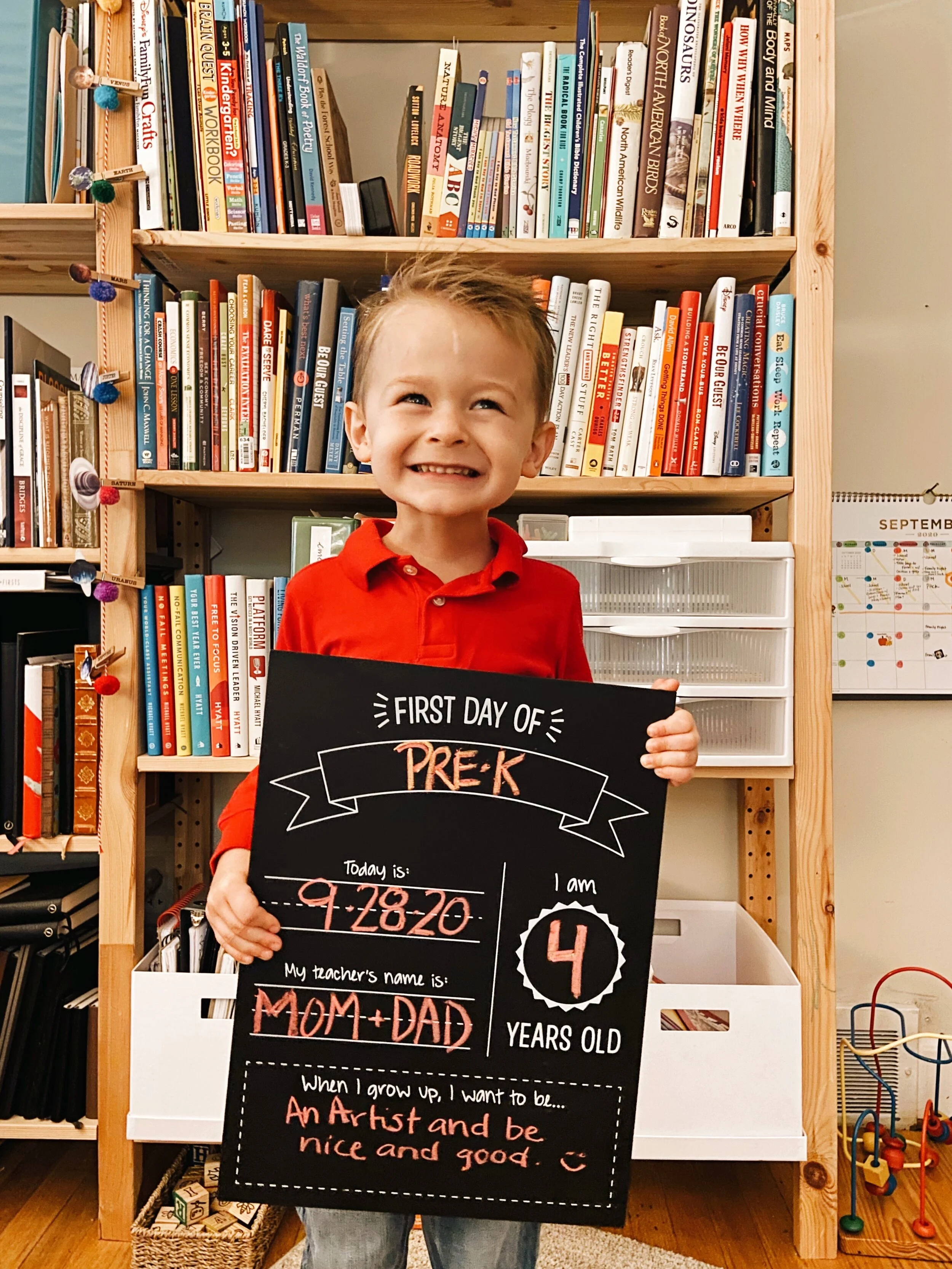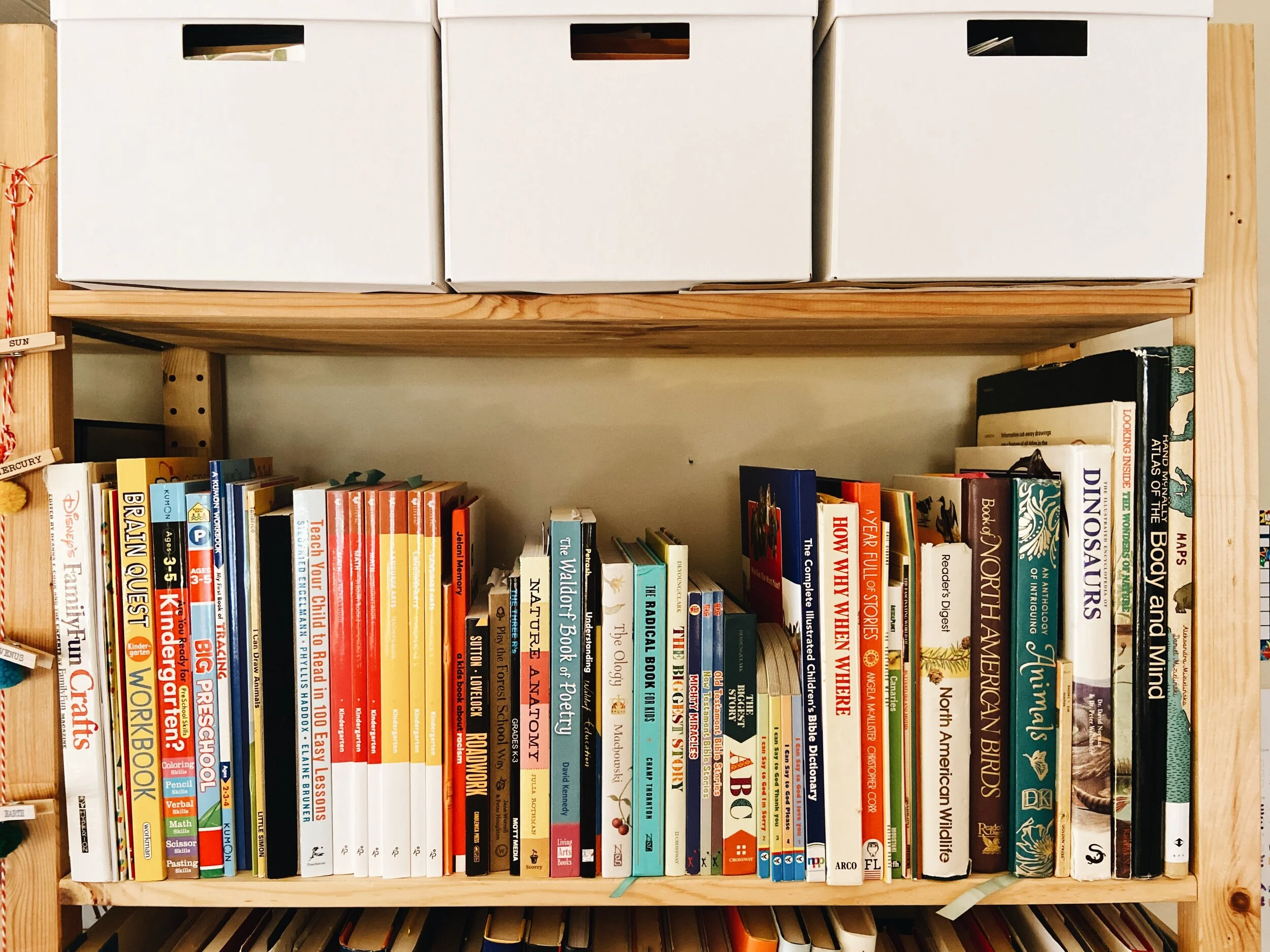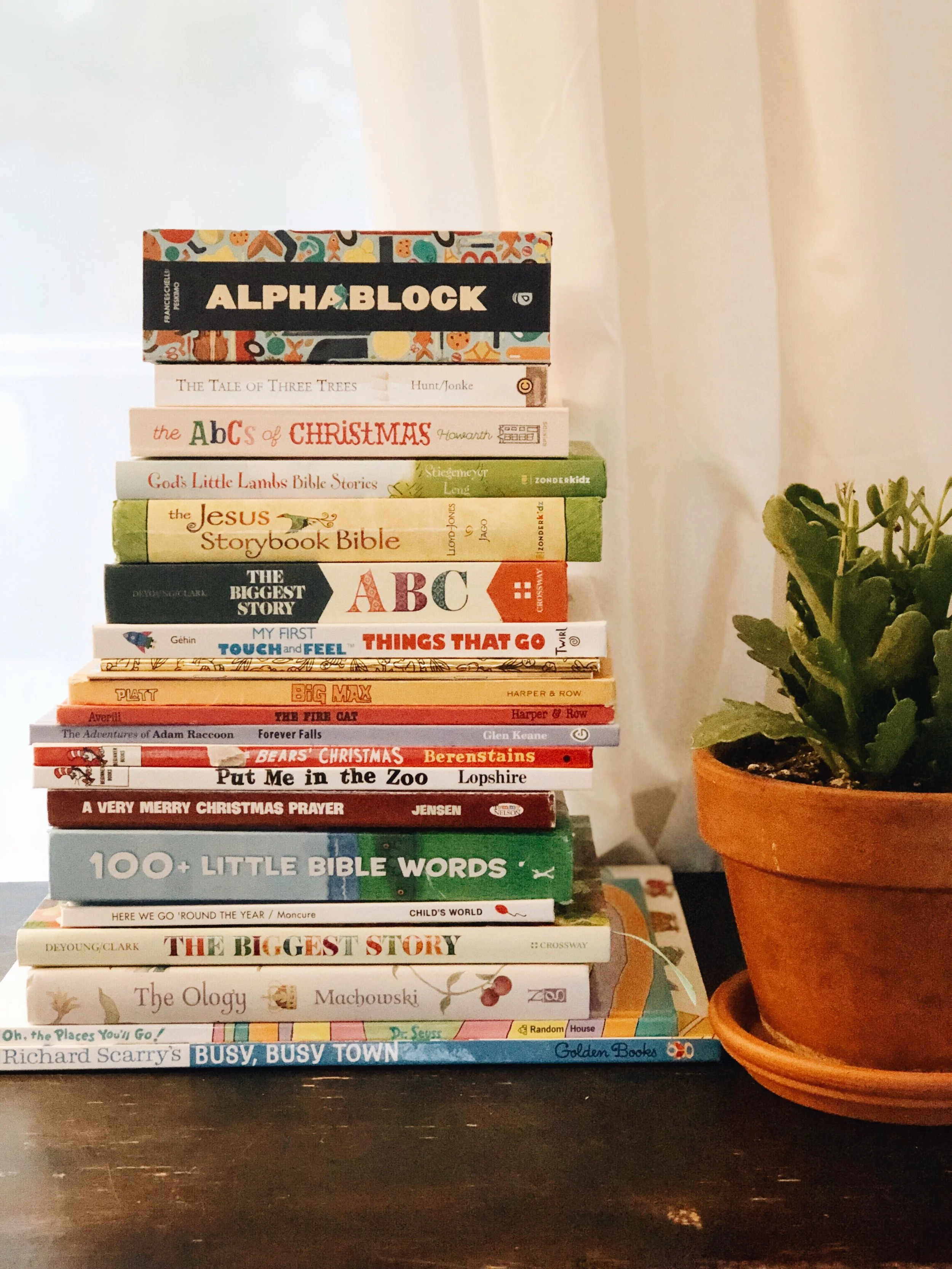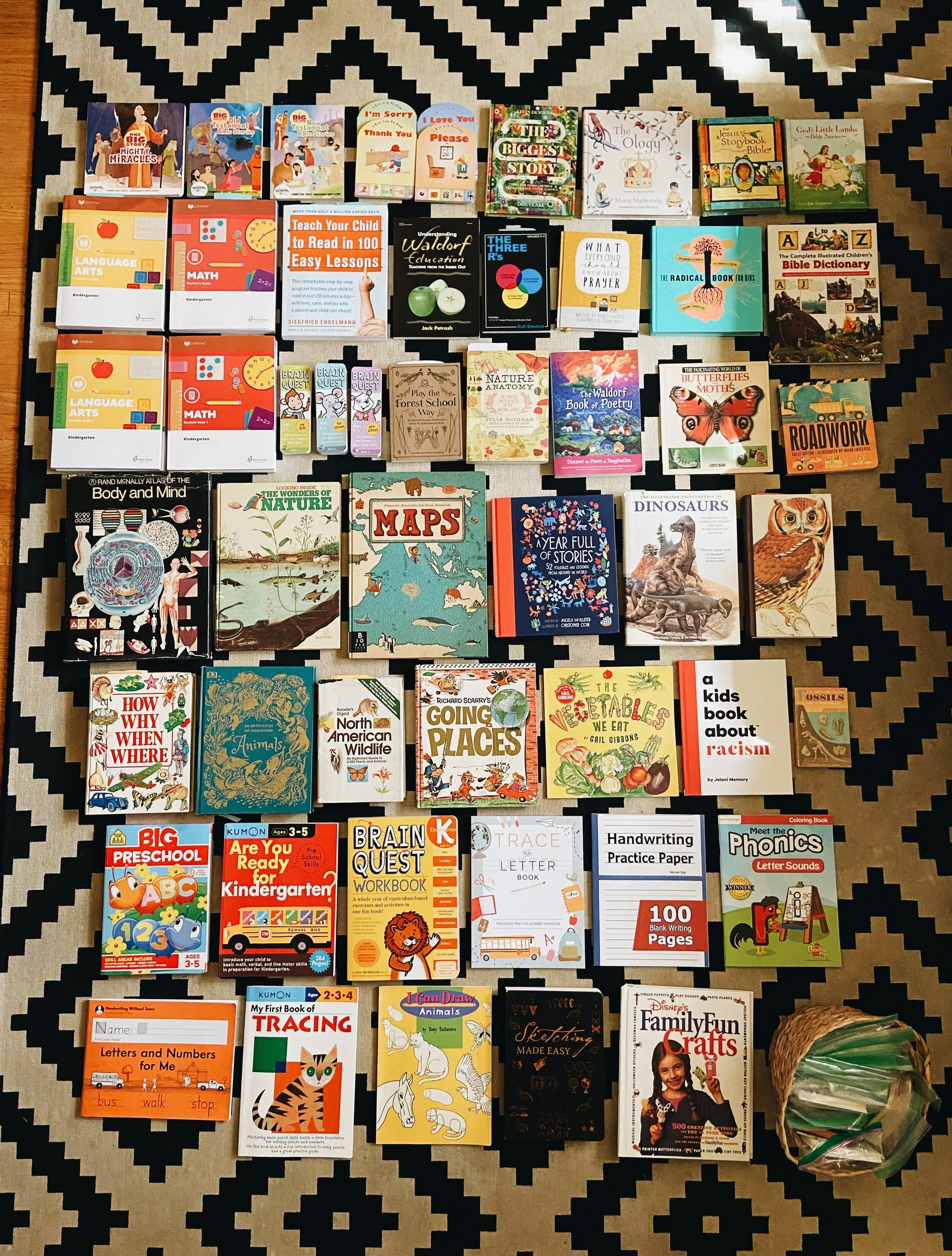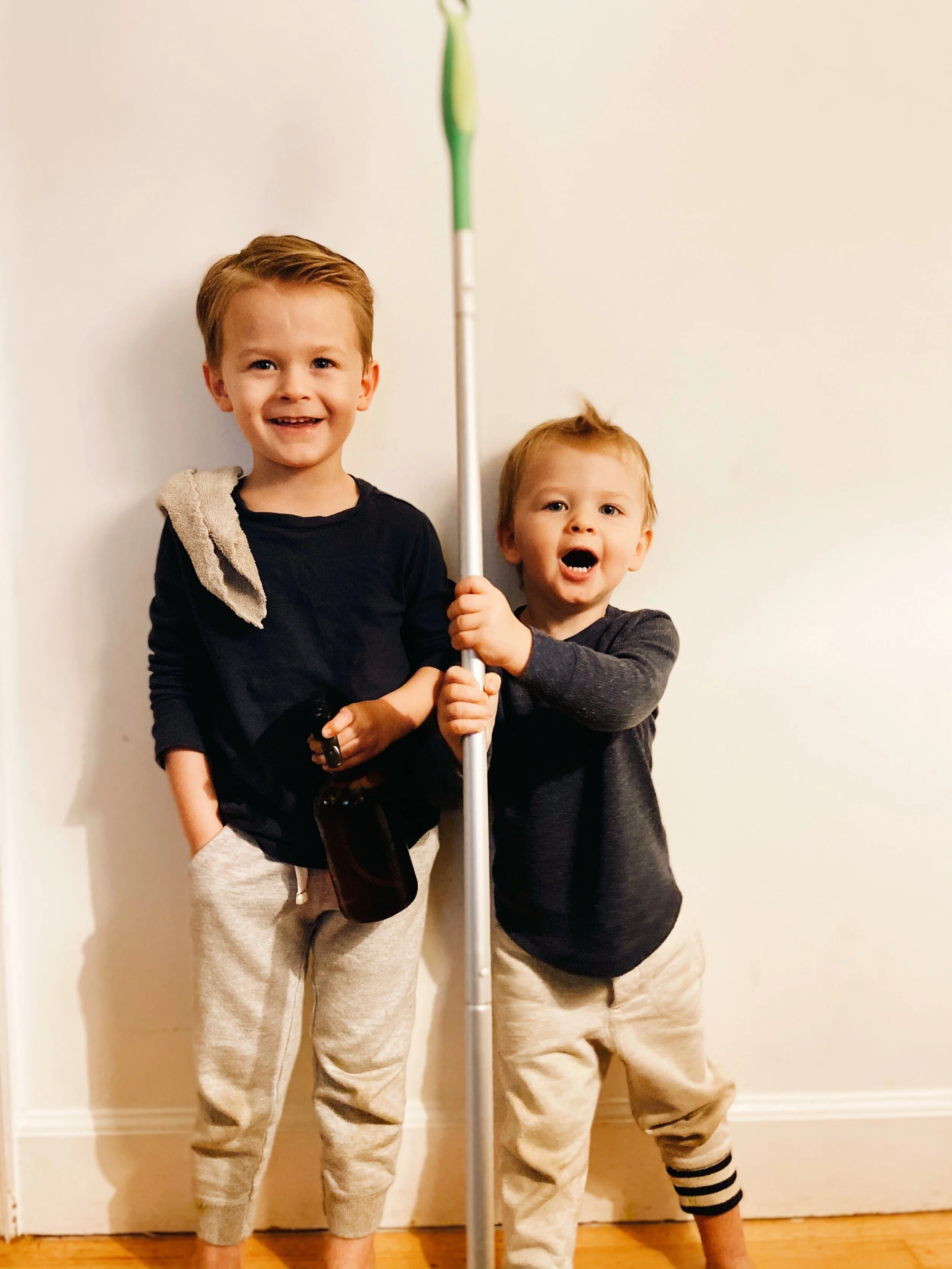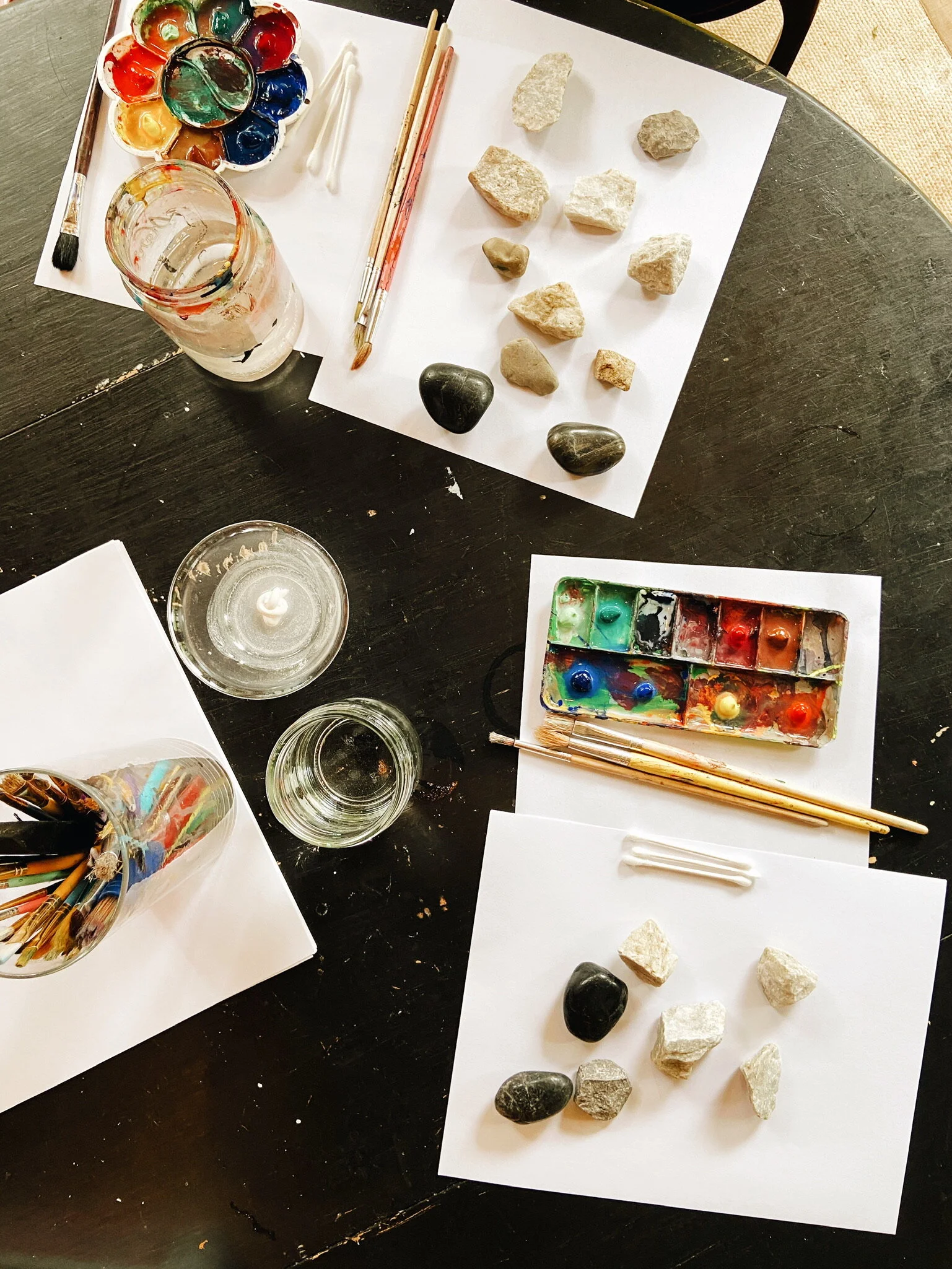DEVELOPING A RHYTHM FOR LEARNING AT HOME
Even though we basically do a form of school year-round we officially started our new year at the end of September. No matter what each year holds, I’m thankful for the time we have together. Learning alongside them is the most wonderful kind of hard.
I’m pretty new to the whole homeschooling thing. A lot of us are getting thrown into a world we’re having to learn to navigate for the first time. While I’m still learning, I did a little research on what books and resources were helpful and learned (from my own experience) which ones connect well with my boys. While I was researching, I found myself wishing I had one centralized resource to help navigate these uncharted waters. As I found books, resources, and practices that helped me, I started writing them down. This was especially helpful when a handful of friends and readers of this blog asked what I was using and how I structure our time for school. This blog is meant to be a starting point for building a rhythm while teaching your children at home during the ages of 2-5.
MAKING IT FEEL SPECIAL
When we decided to teach our children at home, I knew that I wanted to do everything I could to make make this whole experience feel special and exciting for the boys. There’s just something about the start of a school year and having fresh school supplies and anticipation for all the news things you’re going to learn. I loaded both of the boys up with new pens, markers, notebooks, and a small token to celebrate the start of the season. I laid it out the night before so it would be ready for them first thing in the morning.
We started the day with a special breakfast, introduced them to their new supplies, got dressed, and took some first day of school photos. My hope (whatever we decide to do for school in the future) is to continue this tradition of anticipation and celebration on the first day of school. The whole process of learning should feel fun and exciting.
To make things even extra special, we made their favorite food for lunch - homemade pizza. I really think they had a fun first day of school.
QUIET TIME / READING
The boys both have two designated times for quiet and reading. First thing in the morning, they’re able to pick out books or another quiet activity. We do this for around 30 minutes. Of course, some days our morning quiet time is more successful than others. I’m trying to build good habits with the boys and strengthen their ability to self-entertain for periods of time.
We also have quiet time after lunch. Abner (2) usually falls asleep and naps in the afternoon for around 2&1/2 hours. Emet (4) will read, draw, color, play, or nap (if he’s tired).
All of this is held very loosely - especially on the days we have activities planned in the morning that require us to give our attention and focus to getting out the door.
TRADITIONAL TIME AT THE TABLE
I desire learning to be a tension between structure and flexibility. Especially when teaching younger ages. A rough night’s sleep will throw just about anyone off, not to mention attention spans that can fluctuate like the wind. But I think attention works like a muscle - it can be strengthened over time.
Our most structured time of school is the work we do at the table together. I want to give both boys the attention they need and deserve. I go back and forth between having them both work beside each other at the same time, and setting up one of the boys with a toy or activity while I concentrate on the other.
I spend around 45 minutes to an hour at the table between both boys.
OUTDOOR LEARNING
We LOVE being outdoors. And there’s so much to learn just from observing the things around us and asking the right questions. It can be overlooked and taken for granted. I encourage being outside, exploring, trying things out, and asking as many questions along the way as possible. Whether it’s time in the garden, caring for the chickens, digging holes - there are opportunities for learning how things work, how to be responsible, and how to work alongside other people. We love outside so much, if we have the opportunity, we will move all of our books and paper from the desk to the porch or back yard.
ART / CREATIVITY
Art and creativity are central parts of learning in our home. We do this is both structured and unstructured ways. For example, we have structured times of piano practice, specific art projects with instructions, and other creative activities that are meant to build specific muscles of ability in the boys. The hope is that as they develop and find their strengths they will be able to create outside of the box. We also have unstructured times of playing and exploring instruments, making up things out of random art supplies, drawing, and using unconventional methods to teach conventional ideas. For example, we’ve spent traditional time at the table teaching numbers and how to count - but Emet took Jenga pieces and started creating the shapes of the numbers 1-7 out of the blocks. You can also use items from outdoors to teach numbers and how to count. I’ve done this by having the boys search the yard for a specific number of acorns. The boys both collect and we count them together. The idea is to take concepts from books and paper and giving them some life and real-world application.
RESOURCES & BOOKS
Finding the right books and resources for getting started can feel like a lot. There’s a lot of stuff out there and everyone has an angle and opinion on how to do it right. As is usually true, there are pieces from a number of sources that are really helpful. My hope in providing this list of resources is to save you some time and energy as you look for quality resources for your children.
Here are some blogs and resources that I’ve put together in the past that you may find helpful as you think through teaching your children at home.
I’ve also compiled a list of the books that I’m using with the boys.
BOOKS
One Big Story - Mighty Miracles
One Big Story - Old Testament Stories
One Big Story - New Testament Stories
Lifepac Language Arts - Kindergarten
Teach Your Child to Read in 100 Easy Lessons
Understanding Waldorf Education - Teaching From the Inside Out
What Every Child Should Know About Prayer
The Complete Illustrated Children's Bible Dictionary
Brain Quest - For Threes (3-4)
Brain Quest - Pre-School (4-5)
Rand McNally Atlas of the Body and the Mind
An Anthology of Intriguing Animals
Are You Ready for Kindergarten?
Brain Quest Workbook - Kindergarten
Meet the Phonics Letter Sounds
Handwriting Without Tears - Letters and Numbers for Me
The Colorful World of Dinosaurs
*As an Amazon Associate I earn from qualifying purchases.
When I think about teaching my children at home I desire to create a shifting rhythm of quiet reading, traditional bookwork, learning outdoors, and building creativity. Life is different every day and the emphasis in these areas are constantly changing. At the end of the day, if they’re seeing things through start to finish, continuing to ask questions, and applying what they’ve learned in some way, it was a success.
I’d love to hear about the things that have been a struggle for you or questions you’ve had as you’ve started teaching from home. Leave your thoughts in the comments below.
| Credits: Author & Photography - Jacintha Payne |

